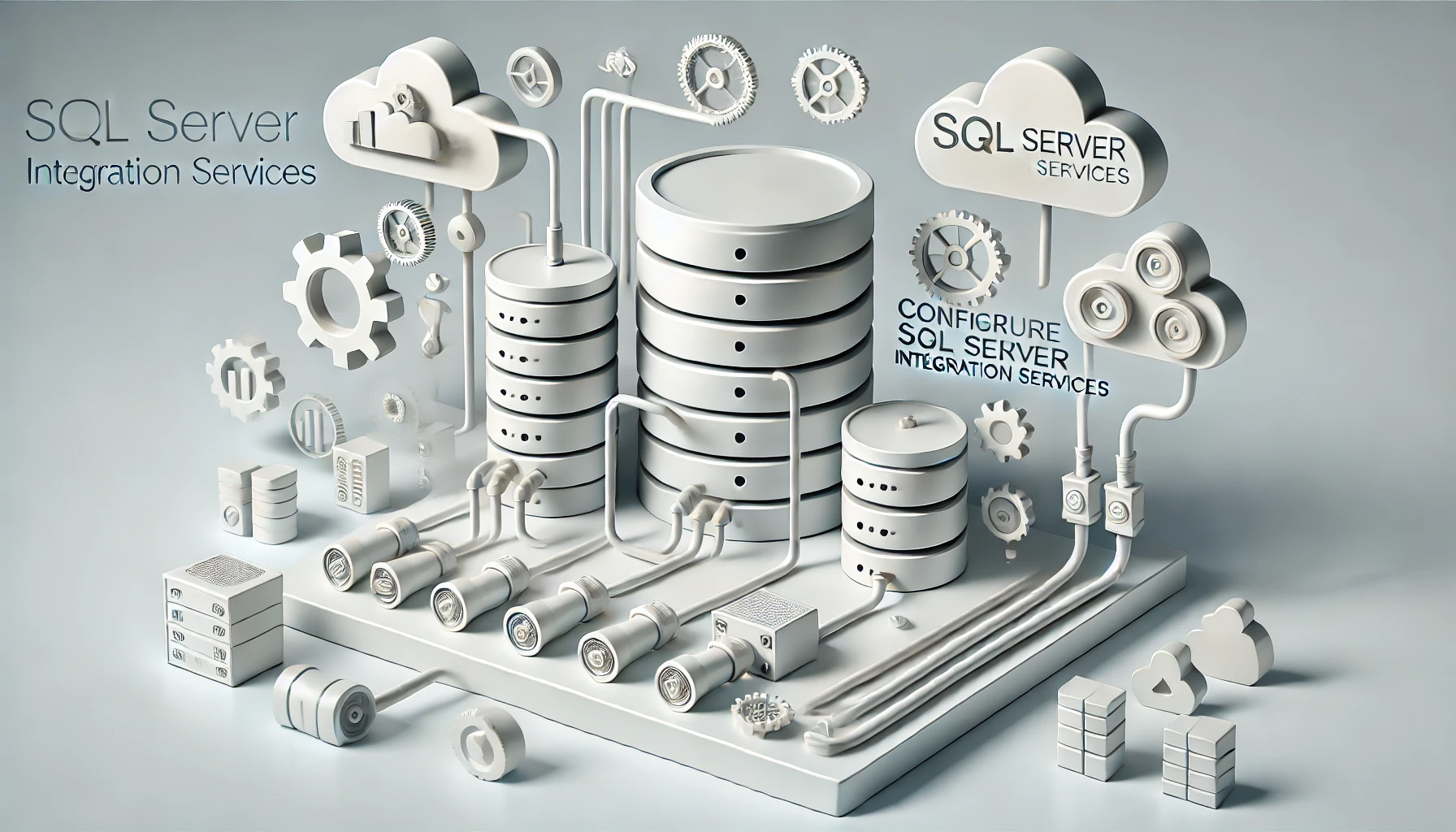To automate tasks with SQL Server Integration Services effectively, you need to understand the intricacies of setting up scheduled jobs and defining task dependencies. By mastering these foundational elements, you can streamline your workflow and boost efficiency. However, there’s more to it than just that. Keep reading to uncover advanced techniques that will take your automation capabilities to the next level and ensure seamless task execution.
Install SQL Server
To begin the process of automating tasks with SQL Server Integration Services, the first step is to install SQL Server. When troubleshooting installation, ensure that the system meets the minimum requirements, such as disk space, memory, and supported operating systems. Download the SQL Server installation files from the official Microsoft website and run the setup wizard. During installation, you will encounter various configuration options. These include choosing the installation type (standalone or distributed), selecting the features to install (SQL Server Database Engine, Integration Services, Analysis Services, Reporting Services), and configuring security settings. It is crucial to carefully review each configuration option to align with your automation requirements. Additionally, consider enabling features like SQL Server Management Studio for enhanced management capabilities. After completing the installation, verify that SQL Server is running correctly and test connectivity to ensure a successful setup. If any issues arise, refer to the installation logs for detailed error messages to troubleshoot effectively.
Setup Integration Services
Setting up Integration Services involves configuring the necessary components for data integration within your SQL Server environment. The Integration Services architecture consists of packages, connections, control flow elements, and data flow components. Packages are containers that hold the elements needed for your data integration tasks. Connections define the data sources and destinations. Control flow elements manage the workflow of tasks within the package. Data flow components transform and move data between sources and destinations using data transformation strategies such as data conversion, sorting, merging, and aggregation.
To set up Integration Services, you need to install the SQL Server Data Tools (SSDT) or SQL Server Management Studio (SSMS), which provide the necessary interfaces for creating and managing SSIS packages. Additionally, ensure that the SQL Server Integration Services feature is installed on your SQL Server instance. By configuring these components correctly, you can begin designing and executing SSIS packages to automate various data integration tasks efficiently.
Create SSIS Package
Upon completing the setup for Integration Services, the next step is to dive into creating your SSIS package. When creating an SSIS package, you will utilize various data transformation techniques to manipulate data as needed. These techniques could include data cleaning, merging, splitting, and aggregating to ensure that the information is in the desired format for further processing.
In addition to data transformation, implementing effective error handling strategies is crucial in an SSIS package. Error handling allows you to anticipate and address issues that may arise during the execution of the package, ensuring the reliability and consistency of your data processing tasks. Strategies such as redirecting error rows, logging errors, and utilizing event handlers can help you identify, manage, and resolve errors efficiently.
Design ETL Process
For crafting a robust ETL process within your SSIS package, a meticulous design approach is essential to ensure seamless data extraction, transformation, and loading operations. When designing the ETL process, focus on optimizing data transformation efficiency. Start by identifying the source data and mapping out how it will flow through the extraction, transformation, and loading stages. Consider utilizing SSIS transformations to manipulate data effectively during the process. Implement parallel processing where possible to enhance performance and overall efficiency.
To optimize the ETL process, streamline data flows by eliminating unnecessary steps and ensuring that transformations are structured logically. Utilize SSIS features such as data flow task properties and buffer tuning to fine-tune performance. Additionally, consider partitioning large datasets for faster processing and leverage lookup caching to minimize database queries. By designing the ETL process with efficiency in mind, you can create a high-performing SSIS package that meets your data integration needs effectively.
Test SSIS Package
To ensure the SSIS package functions correctly, you need to verify data sources, execute package steps, and monitor execution results. Verifying data sources involves confirming the input and output data align with expectations. Executing package steps includes running the package to validate its functionality, while monitoring execution results allows you to track performance and identify any issues that arise during the process.
Verify Data Sources
Before proceeding with the execution of your SSIS package, it is crucial to verify the data sources to ensure the accuracy and reliability of the information being transferred. Data validation plays a critical role in this process, ensuring that the data meets the required standards and is consistent across different sources. Source verification involves checking the integrity of the data at the origin point to prevent any issues during the transfer process.
To verify data sources effectively, start by examining the structure and content of the source data. Confirm that the data types, formats, and values align with the expected standards. Perform data profiling to identify any anomalies or inconsistencies that may impact the data transfer. Additionally, validate the connectivity to the data sources to ensure smooth communication between the source systems and the SSIS package.
Execute Package Steps
When proceeding to the “Execute Package Steps” phase, it is essential to rigorously test your SSIS package to ensure its functionality and performance meet the desired standards. Task automation plays a crucial role in this phase, as it allows for the seamless execution of predefined tasks within the package. As you prepare for package deployment, it is vital to define the execution steps clearly to ensure that each task is carried out efficiently.
Error handling is another critical aspect to consider during the testing phase. By implementing robust error handling mechanisms, you can anticipate and address any potential issues that may arise during package execution. This proactive approach helps in maintaining the integrity of your data and the overall success of your automation process.
Monitor Execution Results
One crucial step in the automation process of SQL Server Integration Services (SSIS) packages is monitoring the execution results, particularly through rigorous testing. To ensure the smooth functioning of your SSIS packages, it’s essential to set up mechanisms for effective monitoring. Utilizing email alerts can be a powerful tool in this process. By configuring SSIS to send email notifications upon completion or in case of errors, you can stay informed about the status of your automated tasks in real-time.
Additionally, dashboard visualization plays a vital role in monitoring the execution results of SSIS packages. Creating interactive dashboards that provide a visual representation of key performance indicators can offer a comprehensive view of the package execution results. These dashboards can help you quickly identify any issues or bottlenecks in the automation process, allowing for prompt troubleshooting and optimization.
Schedule Tasks
To efficiently automate tasks with SQL Server Integration Services, you need to focus on scheduling tasks. Setting up recurring tasks allows for consistent execution based on predefined intervals. Defining task dependencies ensures that processes run in the correct sequence, optimizing efficiency. Monitoring task execution provides visibility into the progress and outcomes of automated processes, allowing for timely intervention if needed.
Set up Recurring Tasks
Setting up recurring tasks in SQL Server Integration Services involves creating scheduled jobs that automate specific processes at regular intervals. To initiate this, open SQL Server Management Studio and navigate to SQL Server Agent, then expand Jobs and right-click on “New Job” to begin the setup. Enter a name and description for the job, then proceed to the Steps section to define the task automation that needs to be performed. After configuring the task steps, move on to the Schedules section where you can set the recurring schedules. Click on “New Schedule,” specify the frequency (daily, weekly, monthly, etc.), and set the start date and time. Adjust any additional parameters such as end dates or advanced scheduling options as needed. Once the schedule is saved, link it to the job you created earlier. This will ensure that the task automation will run at the defined recurring schedules seamlessly.
Define Task Dependencies
Defining task dependencies in SQL Server Integration Services involves establishing the order in which tasks should be executed based on their interdependencies. This step is crucial for effective workflow automation and efficient task execution. Dependency management ensures that tasks are scheduled in a logical sequence, where certain tasks must be completed before others can begin.
To define task dependencies in SSIS, you can utilize tools like precedence constraints. These constraints specify the conditions that must be met before a task can proceed. By setting up these dependencies, you can create a structured workflow that automates the execution of tasks in the desired order. This not only streamlines the process but also reduces the risk of errors and delays.
Monitor Task Execution
Monitoring task execution in SQL Server Integration Services involves overseeing the progress and completion of scheduled tasks within the workflow. To effectively monitor task execution, utilize task notifications and performance metrics. Task notifications can be set up to alert you when a task starts, completes, or encounters an error. This proactive approach allows for immediate intervention if needed, ensuring the smooth flow of the overall process.
Performance metrics provide valuable insights into the efficiency and effectiveness of task execution. By monitoring metrics such as execution time, data throughput, and resource utilization, you can identify bottlenecks, optimize performance, and make informed decisions to enhance the workflow.
Regularly reviewing task notifications and performance metrics enables you to stay informed about the status of your automated tasks, troubleshoot issues promptly, and ensure that all processes are running as intended. By leveraging these monitoring capabilities, you can maintain the reliability and effectiveness of your automated workflows in SQL Server Integration Services.
Frequently Asked Questions
How Can I Troubleshoot Common SSIS Package Errors?
Struggling with SSIS package errors? Implement robust error handling and utilize effective debugging techniques. Dive deep into log files, employ breakpoints, and leverage data viewers. With persistence and attention to detail, you’ll conquer any challenge.
What Are Best Practices for Deploying SSIS Packages?
When deploying SSIS packages, consider multiple deployment strategies for efficiency. Optimize performance by configuring package execution options. Utilize environments for seamless deployment across different environments. Monitor and troubleshoot deployment issues to ensure successful implementation.
Can SSIS Handle Real-Time Data Integration?
Yes, SSIS can handle real-time data integration through its abilities in batch processing and data streaming. It efficiently manages continuous data flow, ensuring timely and accurate updates for your dynamic data needs.
How Do I Secure Sensitive Data in SSIS Packages?
To secure sensitive data in SSIS packages, encrypt data using robust encryption algorithms. Implement access controls to restrict unauthorized access. Regularly monitor and audit user activity. Safeguarding data is crucial to maintaining data integrity and confidentiality.
Is It Possible to Integrate SSIS With Cloud Services?
You can seamlessly integrate SSIS with cloud services like AWS and Google Cloud to enhance data processing capabilities. Leveraging this integration allows for efficient data transfer, storage, and analysis, optimizing your workflow.



